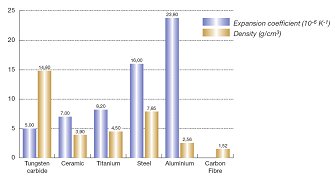the claim was: with the engine temperatures anything between ambient and say 150°C
and made mainly from alumimium castings ,the tub made from carbonfibre-aluminium Honeycomb with Carbonfibre Not expanding with temperature there will be a mismatch at the Interface between engine and tub with the bolts providing the clamping force resulting in shearforces due to one structure altering their dimension whereas the other very likely not to grow over temps.
yep
So we still got the engine growing in height as it reaches running temps and taking the bolts secured in the tub with it ,causing misalignment.either when cold or when hot..take your choice and hope for the best.
No it wont cause misalignment. You see the square metal surfaces, The engine clamps against those with such a high pressure that the temperature change wont cause any relative motion there. Remember as well that the bolt is basically a cantelever anchored into the tub, so it will prevent engine movement.
The engine will grow at the outer boundaries, but at the bolt holes it will be compressed. We will have stress concentrations at certain points, but this will be on a really small scale.
Even though the cfrp has a lower coefficient than cast iron. It still conforms by the same mathematical relations. So if you were to model a situation both with carbon or cast iron as the tub, the only thing that will change is the expansion coefficient of the tub. No matter how mismatched the materials the results should be similar, just that one may be more extreme.
I did a sim a while back with a cast iron block retaining an aluminum piece by 4 bolts. I exposed the aluminum to 100 degree heat. I didn't post it at the time becuase of the aggression towards FEA.

I intended to use carbon, but i didn't have the physical properties at the time. There was no part failure, just some movement at boundaries. The highest stresses were near the bolt holes.
One more thing:
Though the carbon's expansion coefficient is zero it will still extend. It wont extend because of temperature, but it will see some movement from the engine pushing against it. It wont be a shear stress by it self. It will be a tensile stress, since the bolts are probably staked into the tub.





